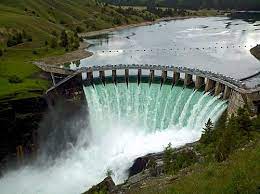Reservoir
Reservoir Simulation Engineer
Reservoir description refers to the process of characterizing and understanding underground reservoirs of hydrocarbons (oil and gas) or other natural resources, such as water or minerals. This is a crucial step in the exploration and production of these resources in the oil and gas industry. The primary goal of reservoir description is to gather data and information about the reservoir's properties, geometry, fluid composition, and behavior to optimize production strategies and estimate the recoverable reserves. Here are some key aspects of reservoir description:
Geological Understanding: Reservoir geologists study the subsurface geology and stratigraphy to identify the types of rocks and sediment layers that make up the reservoir. This includes determining the age, lithology (rock type), and structural features of the rocks.

Reservoir description refers to the process of characterizing and understanding underground reservoirs of hydrocarbons (oil and gas) or other natural resources, such as water or minerals. This is a crucial step in the exploration and production of these resources in the oil and gas industry. The primary goal of reservoir description is to gather data and information about the reservoir's properties, geometry, fluid composition, and behavior to optimize production strategies and estimate the recoverable reserves. Here are some key aspects of reservoir description:
Geological Understanding: Reservoir geologists study the subsurface geology and stratigraphy to identify the types of rocks and sediment layers that make up the reservoir. This includes determining the age, lithology (rock type), and structural features of the rocks.

Reservoir Rock Properties: Reservoir engineers and geologists collect data on the physical properties of the reservoir rock, such as porosity (the percentage of pore space), permeability (the ability of fluids to flow through the rock), and rock compressibility. These properties help assess the rock's capacity to store and transmit fluids.
Fluid Composition: It's essential to analyze the composition of the fluids present in the reservoir. This includes determining the types of hydrocarbons (oil, gas) and their chemical properties, as well as any impurities or contaminants in the reservoir fluids.
Reservoir Geometry: Reservoir engineers use various techniques like seismic surveys, well logs, and geological mapping to define the shape, size, and orientation of the reservoir. This information helps in creating accurate reservoir models.
Well Testing: Well testing involves collecting data from exploration and production wells to understand how fluids flow within the reservoir. This data helps estimate reservoir pressure, fluid flow rates, and the connectivity between different parts of the reservoir.
Core Analysis: Extracting core samples from the reservoir and analyzing them in the laboratory provides detailed information about the rock and fluid properties, including permeability, porosity, and rock wettability.
Reservoir Modeling: Reservoir engineers use the collected data to build computer models that simulate the behavior of the reservoir over time. These models help predict how the reservoir will respond to different production strategies and can guide decision-making for drilling and production operations.
Production Forecasting: By combining all the gathered data and reservoir models, engineers can make predictions about the reservoir's future production performance, including the expected production rates and the ultimate recovery of hydrocarbons.
Reservoir Management: Once a reservoir is in production, ongoing reservoir description is crucial for managing the reservoir effectively. This includes monitoring production data, updating reservoir models, and adjusting production strategies as needed to optimize recovery.
Reservoir description is an iterative process that involves continuous data collection, analysis, and model refinement to ensure the most accurate understanding of the subsurface reservoir and maximize resource recovery while minimizing risks and environmental impacts.
Fluid Composition: It's essential to analyze the composition of the fluids present in the reservoir. This includes determining the types of hydrocarbons (oil, gas) and their chemical properties, as well as any impurities or contaminants in the reservoir fluids.
Reservoir Geometry: Reservoir engineers use various techniques like seismic surveys, well logs, and geological mapping to define the shape, size, and orientation of the reservoir. This information helps in creating accurate reservoir models.
Well Testing: Well testing involves collecting data from exploration and production wells to understand how fluids flow within the reservoir. This data helps estimate reservoir pressure, fluid flow rates, and the connectivity between different parts of the reservoir.
Core Analysis: Extracting core samples from the reservoir and analyzing them in the laboratory provides detailed information about the rock and fluid properties, including permeability, porosity, and rock wettability.
Reservoir Modeling: Reservoir engineers use the collected data to build computer models that simulate the behavior of the reservoir over time. These models help predict how the reservoir will respond to different production strategies and can guide decision-making for drilling and production operations.
Production Forecasting: By combining all the gathered data and reservoir models, engineers can make predictions about the reservoir's future production performance, including the expected production rates and the ultimate recovery of hydrocarbons.
Reservoir Management: Once a reservoir is in production, ongoing reservoir description is crucial for managing the reservoir effectively. This includes monitoring production data, updating reservoir models, and adjusting production strategies as needed to optimize recovery.
Reservoir description is an iterative process that involves continuous data collection, analysis, and model refinement to ensure the most accurate understanding of the subsurface reservoir and maximize resource recovery while minimizing risks and environmental impacts.
#ReservoirManagement
#OilandGasReservoir
#WaterReservoir
#ReservoirEngineering
#ReservoirGeology
#ReservoirMonitoring
#ReservoirResearch
#ReservoirViews
#ReservoirLife
#OilandGasReservoir
#WaterReservoir
#ReservoirEngineering
#ReservoirGeology
#ReservoirMonitoring
#ReservoirResearch
#ReservoirViews
#ReservoirLife



Comments
Post a Comment